Your trip to Delhi is incomplete if it doesn’t include a visit to Qutub Minar. Located in Mehrauli in south Delhi, it is one of the oldest surviving minarets in Delhi.
Renowned as Delhi’s prime site for visitors, Qutub Minar has maintained its beauty for over 800 years now. So, if given a chance who would not visit the same? There are lots of people who may or may not have visited this beautifully crafted monument.
However, is it the only reason one should visit the site? Well, I think there is a lot more that it has to offer.
Therefore, this blog will take you back in time to understand everything from its history to its significance to its structure along with some interesting facts!
The History of Qutub Minar
If you are asking me “Who built the Qutub Minar?”, the answer is not a straightforward one. It was started by the founder of the Delhi Sultanate – Qutbuddin Aibak. It was this victory over Delhi that he attempted to symbolize with the Qutb Minar. He managed to get only one storey made in Mehrauli 1199 AD. It was his successor and son-in-law – the famous slave king Iltutmish who continued the construction to include three more levels. Lightning destroyed the top floor of this construction in the 1360s. It was the then-ruler of Delhi – Feroz Shah Tughlaq who not only replaced that damaged floor but added one more on top of it.

They say that even Alauddin Khilji added some touches to the Qutub Minar. However, the tyrant that he was, he did not contribute any major aspects to the pillar and tried to build his own. The construction of the entrance of the monument was done through Sher Shah Suri. All in all the Qutub Minar, with all its builders, took around 75 years to be completed.
After a period of 300 years, in the year 1803, the monument again faced some damage in the structure due to the earthquake. For the same, a major from the British Indian Army named Robert Smith decided to restructure the monument in the year 1828. An addition of a pillared cupola to be able to sit on the 5th floor contributed as the 6th floor of the monument. The 6th and final level was demolished by Henry Hardinge (Governor-General of the country) and was then placed adjacent to the minar. A tragic event in 1981 that took the lives of 47 people led to the restriction of entry in the monument.
The towering pillar is not the only thing that this UNESCO heritage site has. It is an entire complex of monuments including a mosque, a few tombs, and even a school termed as the Madrasa. So be prepared to spend at least one hour here for there are just loads to take in at this must-visit place in Delhi.
Timings & Entrance fees
- The Qutb Minar Complex is open from 6 am to 6 pm, every day.
- The best time to visit the Qutub Minar is at Sunrise or at Sunset.
- The entrance fees for Indians are INR 35 (Online) and 50 (Cash at the counter) while for foreigners it is INR 550. You can purchase them online through the Delhi Tourism website.
The Qutub Complex and Things to See
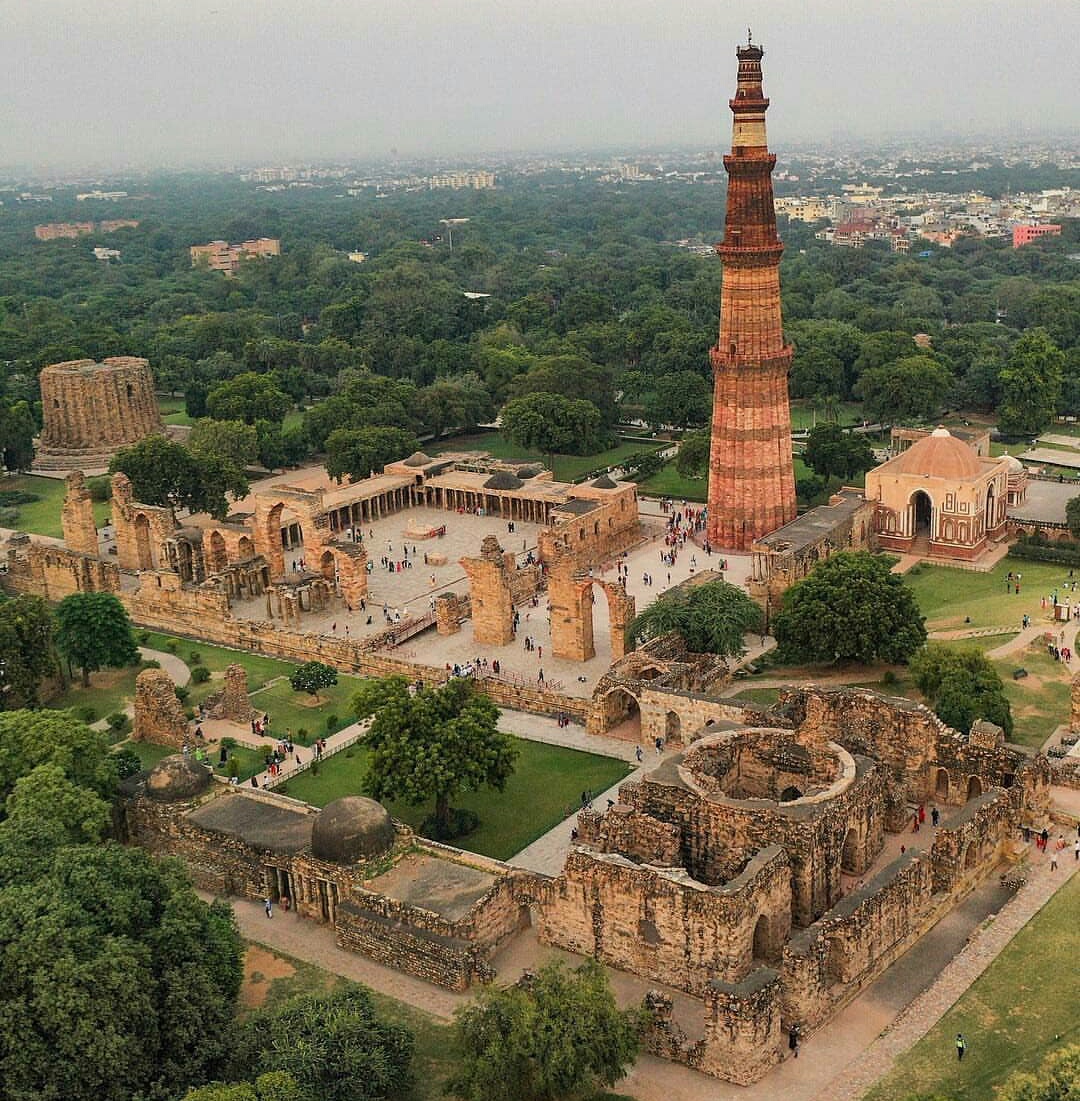
The Qutub Complex has been one of the major attractions for individuals who have a major interest in history. The things to see in the monument has mentioned below:
- It also includes the glorious Quwwat-ul-Islam Mosque.
- The south side of the monument includes a cupola gateway that opens to a mosque.
- It also has an Iron Pillar that never rusts off the Chandragupta II.
- It has a tomb of the Iltutmish, the 2nd leader of the Delhi Sultanate.
- It has a tomb- of Imam Zamin, the Turkestani Cleric.
- It includes Allaudin Khilji’s Tomb & Madrasa.
- It includes Alai Minar which is the unfinished tower of the Khilji.
- It includes Smith’s Folly
- It also includes Sanderson’s Sundial (which has been designed all over with white marble).
Quwwat-Ul-Islam mosque
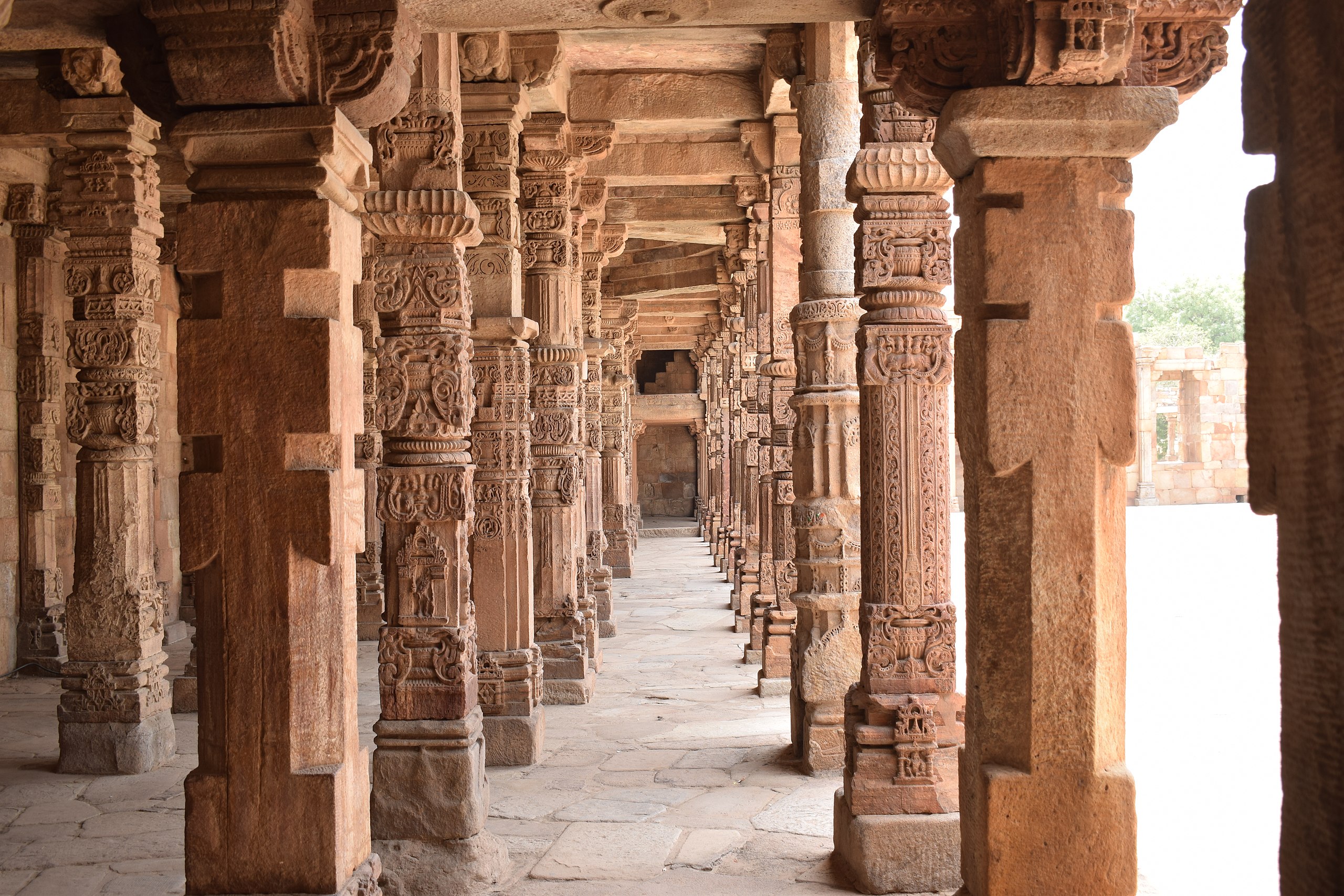
I always assumed that the open structure near the Minar was just a Pavillion. The place was actually a mosque by the name – Quwwat ul Islam. The name means “Might of Islam”. The mosque was set up by Qutub Uddin Aibak himself in the 1190s. As I understand, this makes it one of the first few mosques in India. It is also, a very unique mosque for its architecture and designs that have elements of Hindu and Jain religions within them. Bet that fact has made you raise your eyebrows 😉 And if you don’t believe me, see for yourself in the picture below.
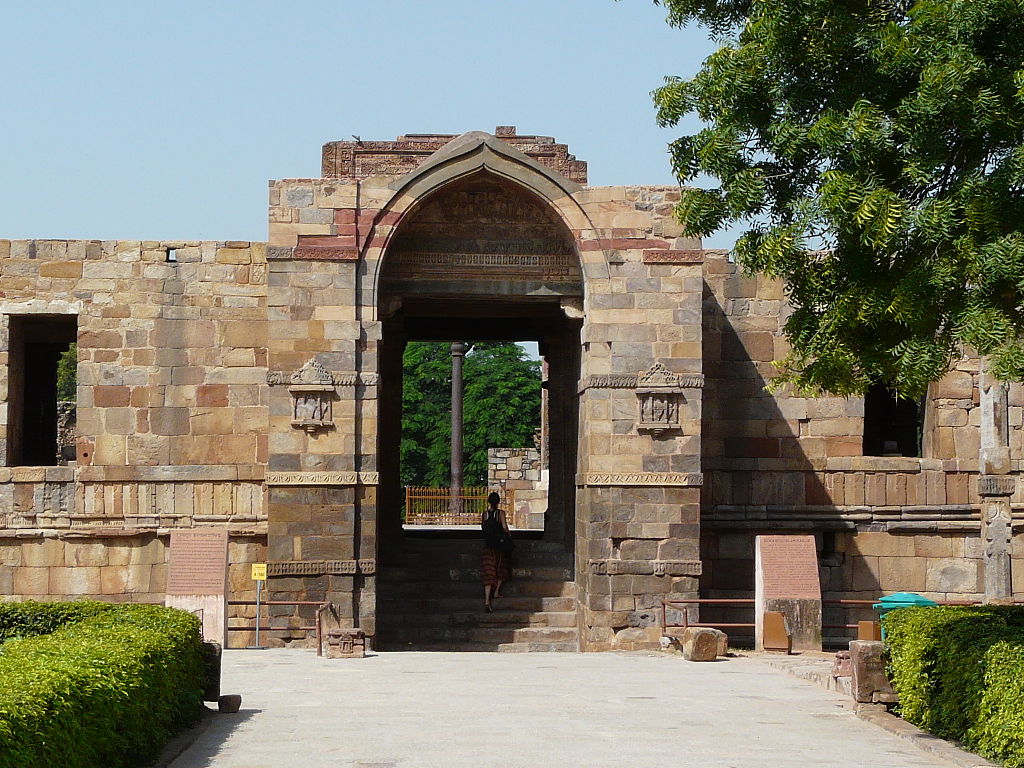
This is the entrance to the mosque. On the top, you see the Arabic script while right below it is a face. This is called the Kirti Mukha – a carving that is present in the Shiva temples. It is the rare fusion of these two religions that makes the Quwwat ul Islam mosque an important Qutub Minar attraction.
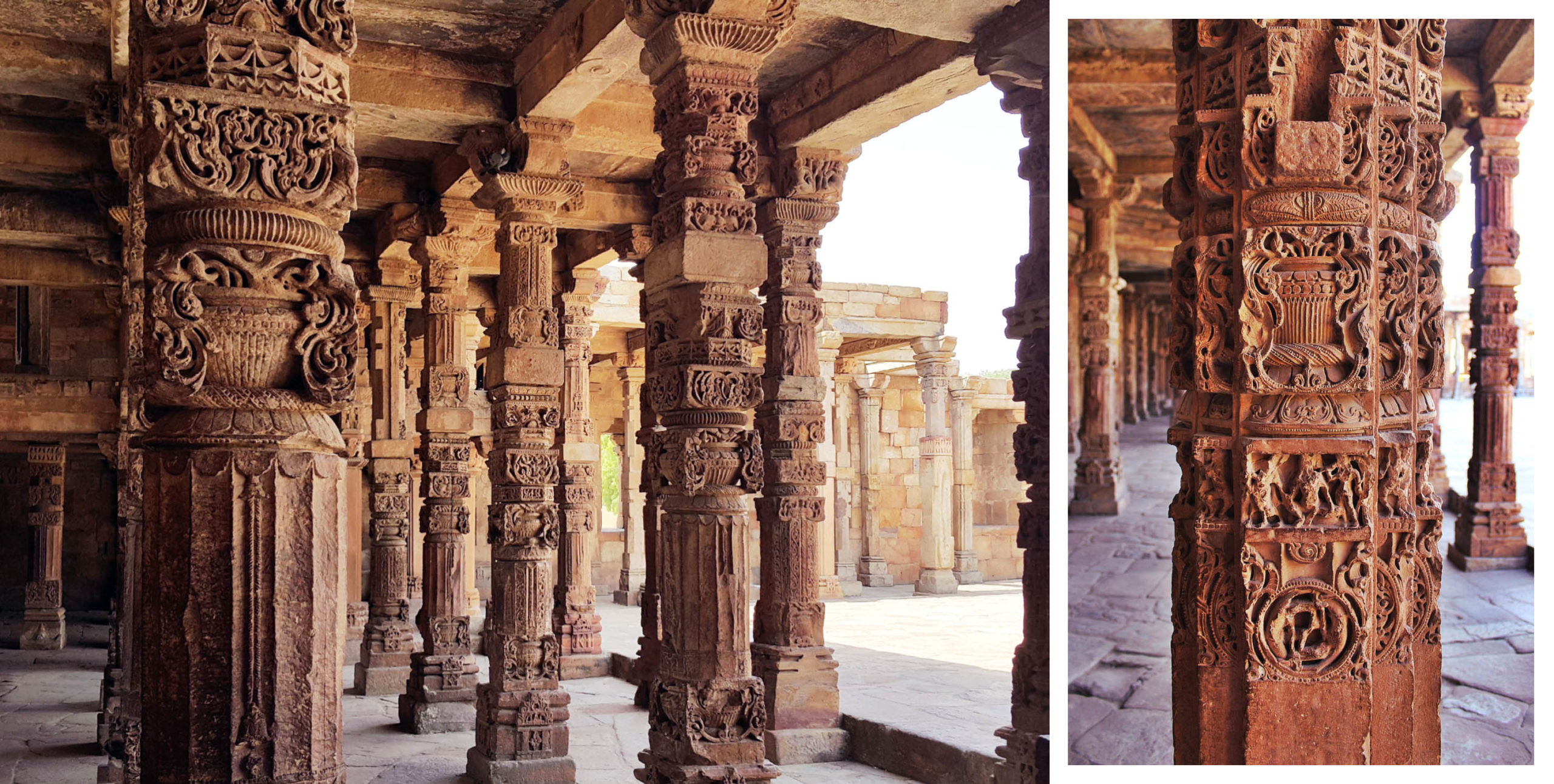
As you walk into the mosque, the numerous carved temple pillars are further testament to this unique merging of styles.
It is believed that since Aibak was in a hurry to announce his glorious victory in India, he wanted to get the mosque built faster. His artisans, therefore, got him around 450 odd pillars by destroying 27 Hindu and Jain temples. It is those pillars that currently, stand tall in the Qutub Minar complex. Some archaeologists also believe that the mosque has been built on the remains of a temple.

The mosque was built using the corbelled arches construction style. The main prayer hall of the mosque gives you a great way of the minar and I did spend a few moments just taking in the magnificent symbol of victory.
The Sarai in Qutub Minar
Just after the entrance, on the left, behind the greens lay a Sarai. Sarai is a resting place for travelers. It was possibly built by the Mughals in the 1700s and had rooms for voyagers.
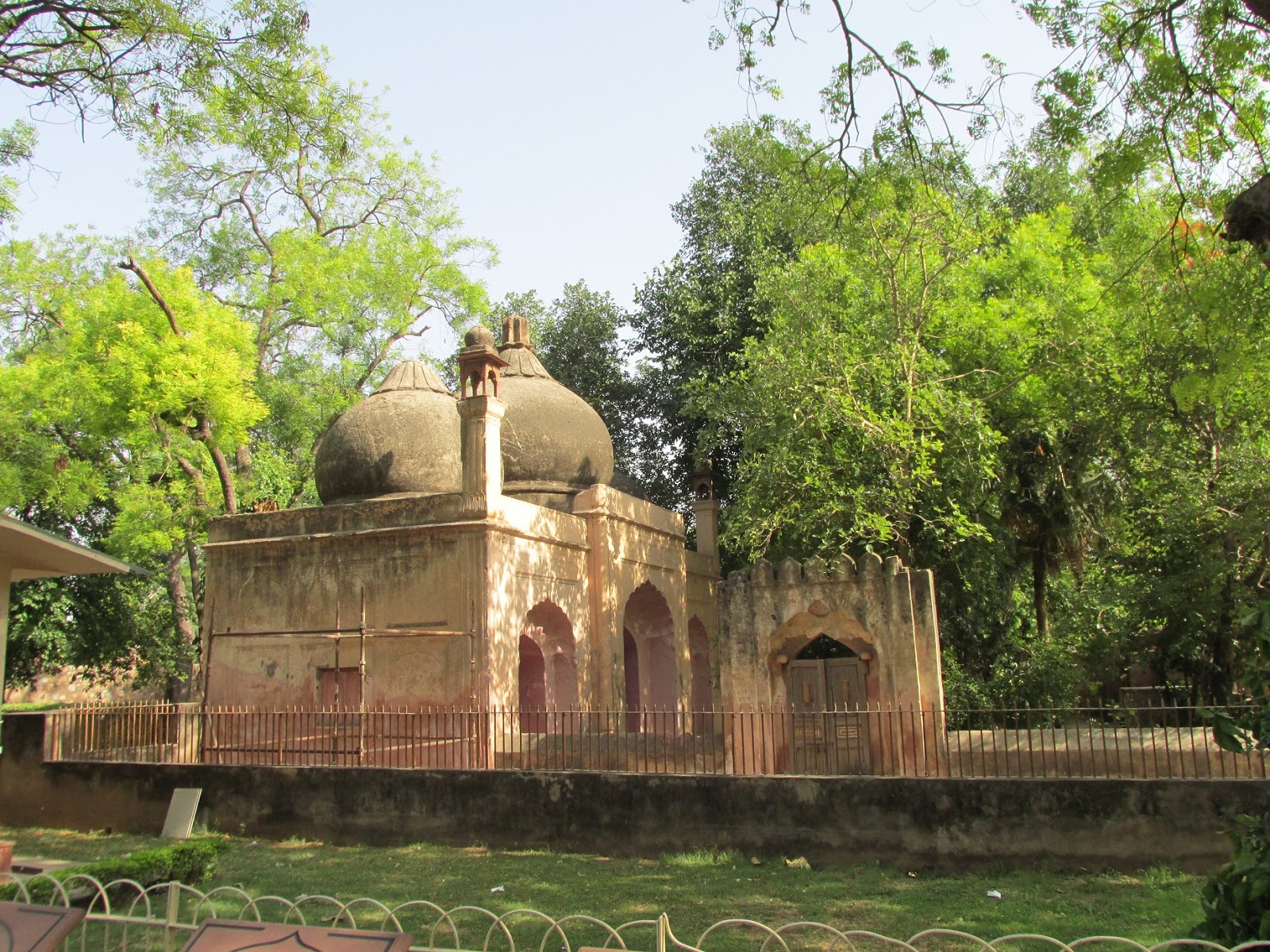
Note the typical Mughal-styled gardens. Called the Charbagh style, it is said to depict the gardens of Paradise. Look around the Sarai and you will be able to spot just the same type here.
The Charbagh styled gardens are a feature of a lot of Mughal monuments.
The Humayun's tomb in Delhi is just one of the examples.
The other popular place that you can view the Charbagh gardens at the
Wonder of the World - Taj Mahal.
The Tomb of Iltutmish
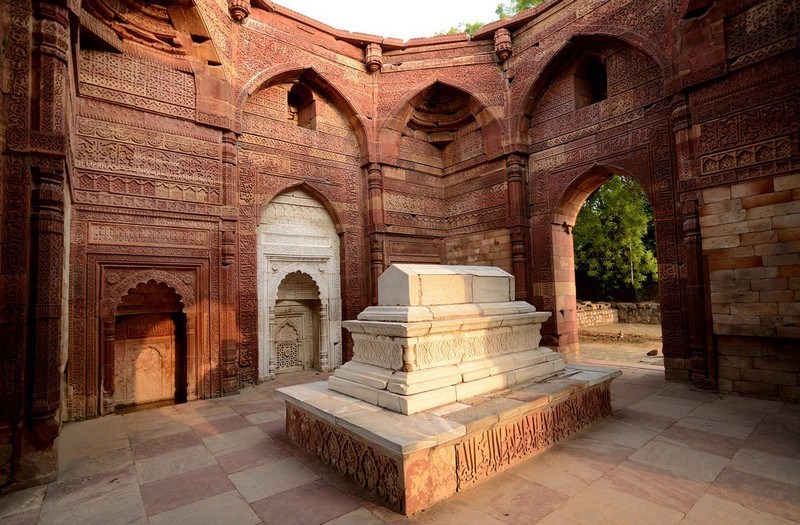
The 2nd ruler of Delhi and the successor to Qutub Uddin Aibak has been buried in the Qutub Minar complex, right behind the Quwat ul Islam mosque. The red and white structure was visible to me as I walked away from the Alai Minar towards the mosque. In contrast to the Indo – Islamic architecture of the mosque, the tomb was largely Islamic. The red and white contrast reminded me of the Agra Fort – where Akbar favored the red sandstone and his grandson – Shahjahan loved the white marble.

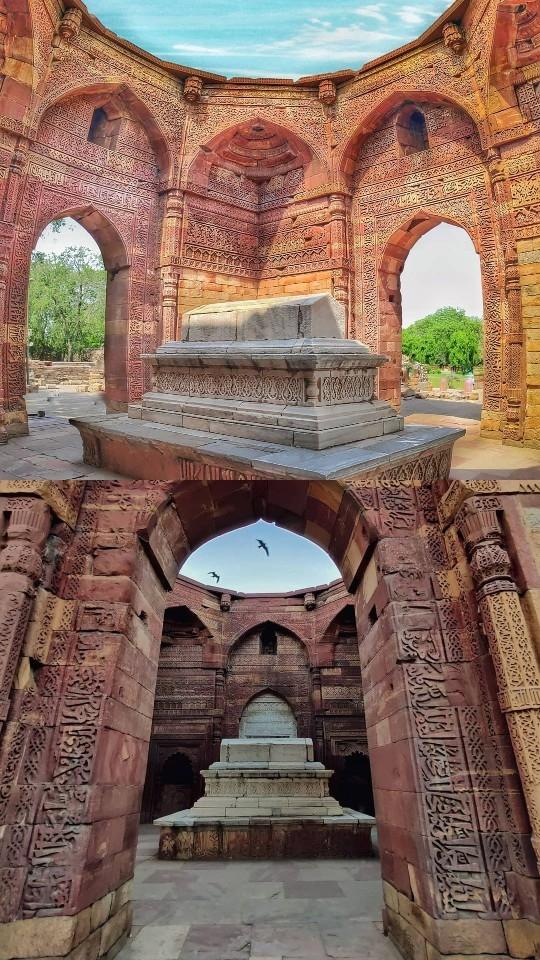
However, in this case, it was only the tomb and the Mihrab that were prominently white.
Two major aspects of this monument fascinated me and are noteworthy:
- The first was the plain Quranic designs around the various arches of the tomb. They were almost like floral motifs.
- The 2nd was the absence of a ceiling. The tomb was squarish and if one looked at the open ceiling, it too will resemble the shape. The construction term used was squinches. I believe that is where a dome is inserted. The dome succumbed to the sands of time and hence, the open-to-sky tomb.
Alai Minar in the Qutub Minar complex
Alauddin Khilji, a later ruler of Delhi, tried to make a minar of his own. You can see it right here in the Qutb Minar Complex. It looks like a heap of rubble that has fused together. A lot of us might even mistake it as a pile of ruins. However, the Alai Minar is the unfinished feat of the Khilji king.
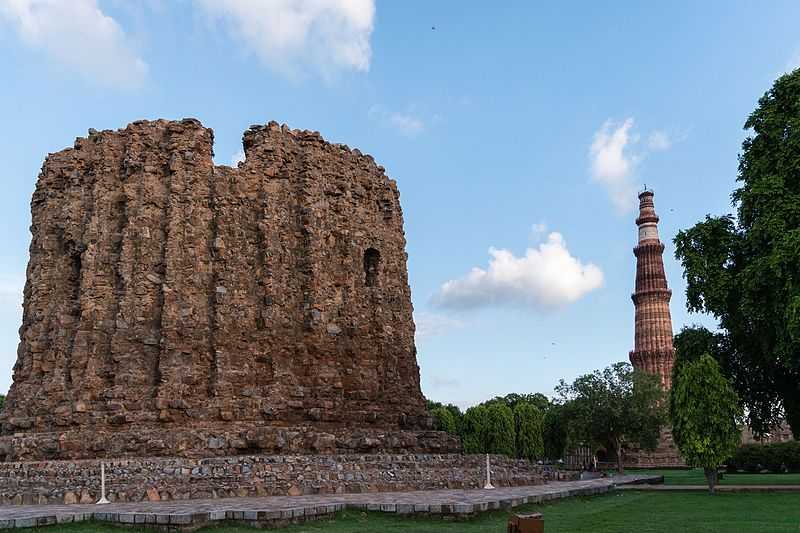
Up close, I realized how big the pillar actually was. It was much wider than the Qutub Minar and the first storey (the only one) was definitely bigger than the Qutub. The length of this is 25 meters. At that rate, the Alai Minar would have been double the size of the Qutub Minar. Guess, it might have been as beautiful too, but with its creator gone, we will never know.
Alauddin Khilji’s Madrasa

Well, Khiji did leave another mark in the complex. Right ahead of the tomb, away from the Quwwat Ul Islam mosque, are a set of large arches. These are the remains of the educational institute called the Madrasa. It was built by Alauddin Khalji and has rooms for the students and possibly, even a library. Somewhere behind is the tomb of this ruler.
Walking around the Madrasa did give me a feeling that in its heydays this might have been an important place. The sheer magnitude of its rooms and passages is largely the reason. A word of caution though – the passages lead to unseen corners where you might find a feisty couple spending quality time 😉
The Iron Pillar at Qutub Minar

At first glance, it looks like an ordinary pillar, just another marker of an earlier time in Delhi’s layered history. All of 7.2 meters tall, it stands in the middle of an empty square in the Qutub complex.
But take a closer look and you will see why this pillar is one of the most enigmatic structures in India. Made of iron, it should have turned into a pile of rust a long time ago, considering its age- it is 1,600 years old – and exposure to Delhi’s heat, dust, cold, and rains.
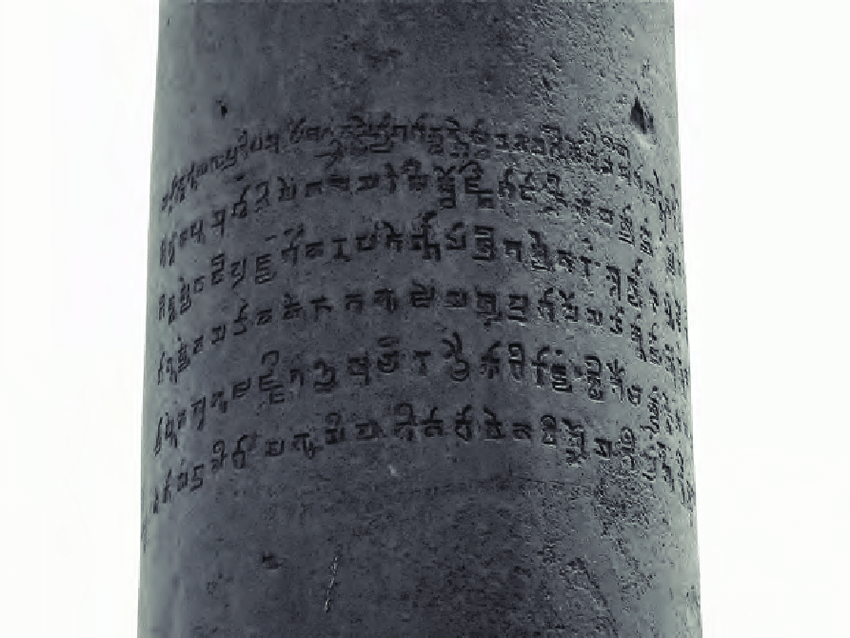
Inscribed on its shaft, on the side facing the mihrab arches of the ancient mosque, is a deeply incised inscription. This ancient inscription, in the Sanskrit language and Brahmi script, belongs palaeographically to the 4th century CE and is called ‘Gupta Brahmi’ after the Gupta Empire.
According to the inscription, the pillar was erected by King Chandra and celebrates his victories in battle and was dedicated to the Hindu God Vishnu.
But this was not the Pilla’s original site. It is said to have been erected originally in the historically important city of Udaygiri in Vidisha (present-day Madhya Pradesh), and according to popular myth was brought here by SUltan Iltumish of the Slave Dynasty after he conquered Vidisha. He is said to have brought is to Delhi, his capital, as a trophy, much like the Ashokan columns brought to Delhi by the Tughlaq Sultans.
But there is another legend that says the pillar was brought to Delhi by the Tomar Rajput king Anangapal, who founded Delhi in the 11th century. It is said that he brought it here to adorn his capital city at Lal Kot, the ruins of which are visible in the vicinity, and the great Vishnu Temple that he built here. The Jain text, Pasanahachariyu (1132 CE) tells us that the pillar was so mighty and magnificent that “the weight of the pillar caused even the Lord of the Snakes to tremble”.
The pillar you see today is sadly incomplete. It originally had a capital atop as is attested by the deep dowel hole on the abacus. Since it was dedicated to Vishnu, it undoubtedly bore either a zoomorphic or anthropomorphic image of Garuda, the eagle mount of Vishnu. This was probably removed during the Sultanate period because the use of images went against the tenets of Islam.
The Architecture of the Qutub Minar
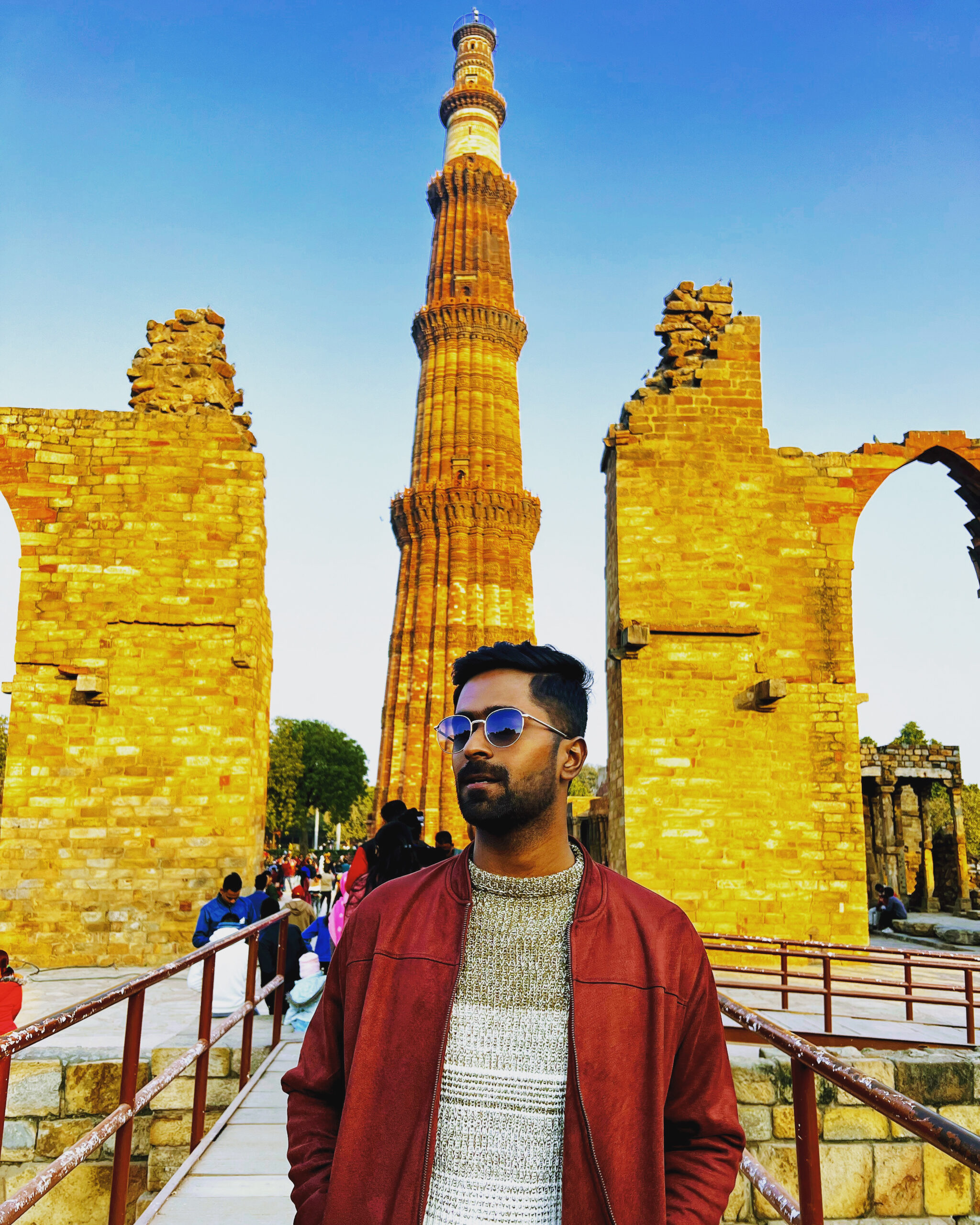
It was now time to get to the centerpiece of this UNESCO complex. The Qutub Minar kept teasing me at various points of my journey. With every step that I took towards it, it beckoned me to get up, close and personal with the details. Best I enumerate the various Qutub Minar facts first and then, share the little secrets I discovered.
- The total height of the Qutub Minar is 73 m.
- It is 14.3 m at the base and tapers up to 2.7 m
- It has 379 stairs within it to reach the top. Yes, you can climb to the top. However, no! You are not allowed anymore, following a stampede in 1981. An electricity failure resulted in a rush that killed around 47 people, including a few school kids.
- The Minar has been made with red sandstone largely. The basic construction involves limestone mortar – which is believed to help the minar withstand the tremors of an earthquake.

When you go close to the Qutub Minar, you will notice the Quranic verses inscribed onto its facade. Along with the same, are calligraphic inscriptions in Parso-Arabic and Sanskrit scripts on the fluted facade. There are inscriptions around the entrance of the Minar that indicate the various people involved in the construction. Even Sikander Lodi is said to have contributed to some part of the Qutub Minar.
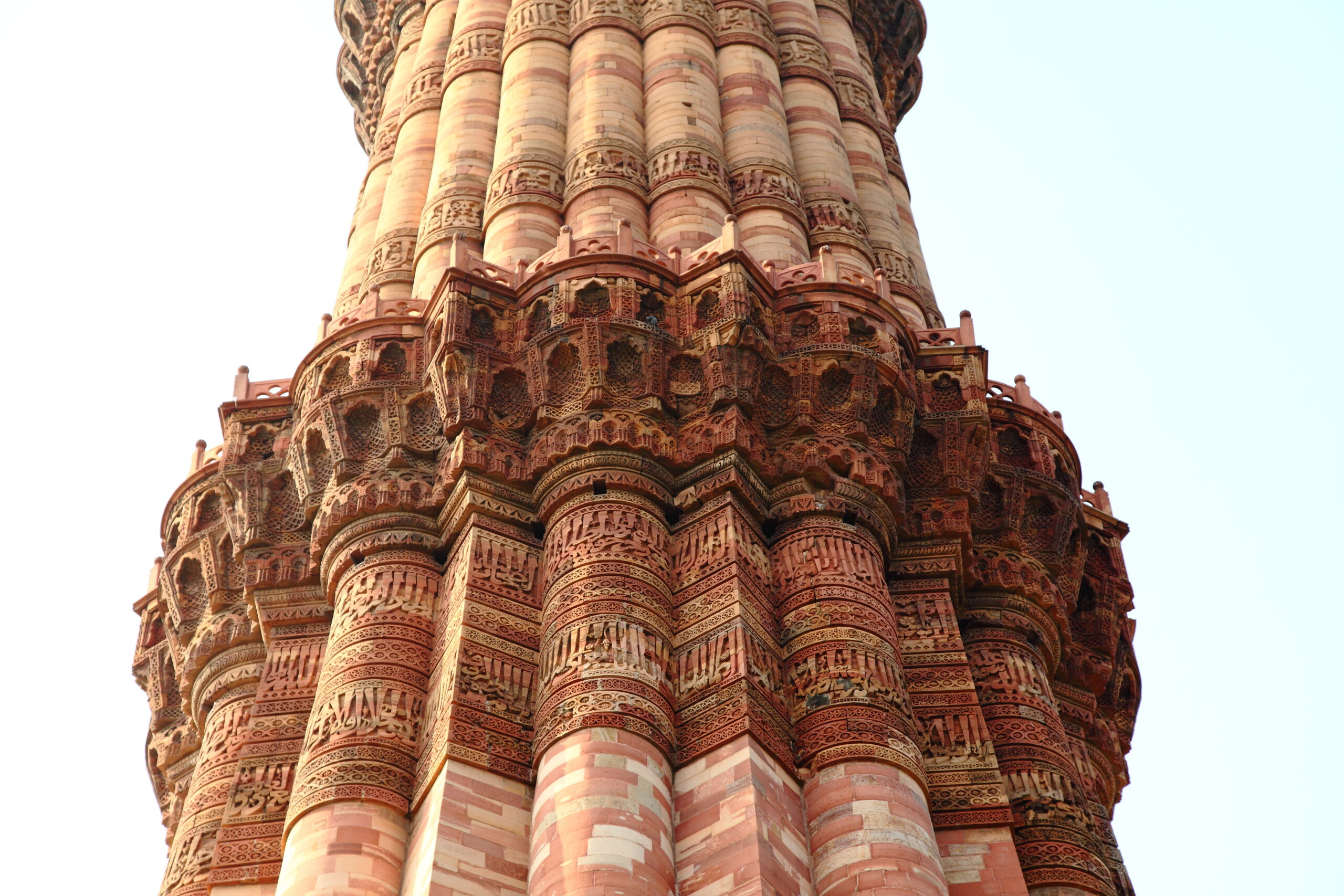
The presence of the white marble on the 4th and 5th floors is indicative of the construction by Feroz Shah Tughlaq. Even though he favoured a different material, he ensured that there was some uniformity in the design.
I almost got a crick in my neck while attempting to admire the intricate work on the balconies. I only wish I had a ladder to see it from close. The closed doors of the Minar teased me. I only hoped that someone saw me and opened the lock to let me climb this tower of victory. Maybe, the authorities should allow a limited number of people for a fee – quite like how they do at the leaning tower of Pisa. At least that way, thirsty souls like me will find their satiation.
Well, that concludes my tour of the Qutub Minar. Hopefully, with this travel guide to the Qutub Minar, you too, have discovered some unknown or lesser-visited facets of the UNESCO site. I am pretty sure you are now eager to get going with this Delhi Tourist attraction.
Also read:
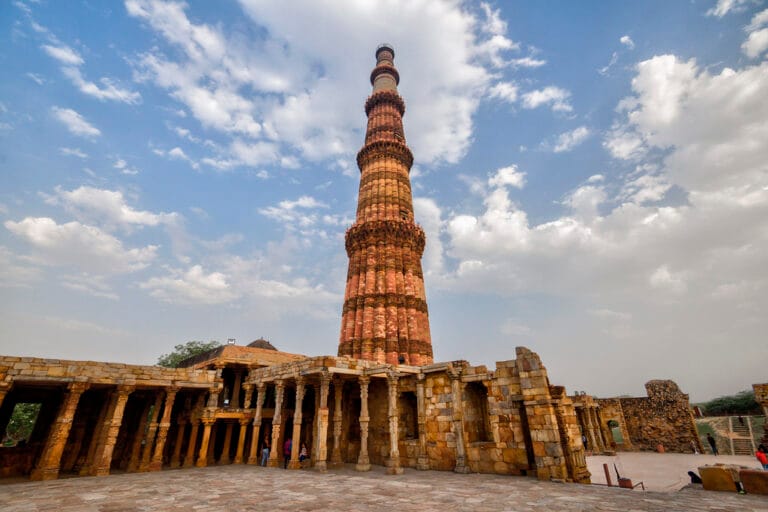



1 Comment
Itts such as yoou ledarn my thoughts! You apear to graap a lott abouut this, like yyou
wrote the e book iin it oor something. I believe that you
could do wioth some percent to forche thee message hlme a bit,
however other than that, thwt iss excellet blog. A fantastic read.
I’ll certainly be back.